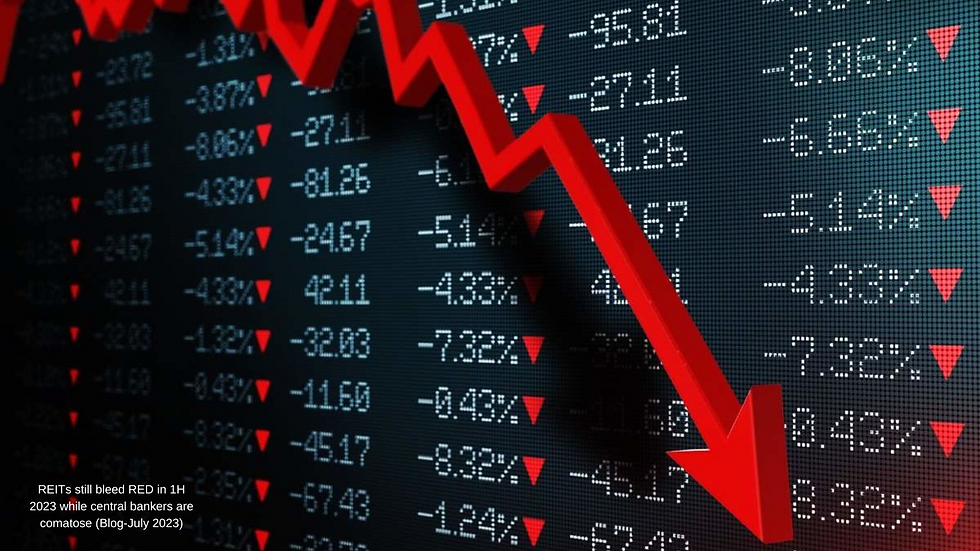HOW BAD CAN VALUE INVESTING GET?
- by Gabriel Yap

- Nov 19, 2017
- 3 min read
09/2017-
Value Investing is mired in one of its worst period ever, prompting many to ask and in effective, thousands of so-called proponents and teachers of value-investing, if this investing style indeed works anymore.

Since the Global Financial Crisis (GFC) of 2008, value stocks, those that are cheaper than most peers relative to earnings and over time, have significantly underperformed their growth or dividend counterparts.
Since the GFC, investors who have punted their money and life savings on companies with accelerated growth or CAG stocks like Amazon, Facebook, Alphabet or Google would have the last laugh to the bank. In fact, they would have made fortunes that would last a few generations.
Instead, so-called value stocks with PER of less than 10x, P/BV at trough values or those that look dirt-cheap relative to traditional fundamental metrics like profits or cash flows (think Tesla vs Ford or Netflix vs Verizon), have fallen out of favour, not only in Singapore, but also in the more developed markets of the US and Europe.
The struggle for value stocks over such a long period contradicts the popular investment approach first preached by Benjamin Graham who according to Warren Buffet, is the father of Value Investing.
The current market attraction to highflying stocks like FAANG and technology has punished value investors in a similar way in the late 1990s leading up to the dot-com bubble. Not surprisingly, about US$120 billion have been pulled from US large-cap value funds since the GFC. If the current disparity continue, I would expect that this trend may continue.
To me, while value investing has taken a huge knock, I think that the current period of ultra-low interest rates for an ultra-low period of time has led to the rage on growth stocks like FAANG. Together with slow economic growth and below-average inflation, these have bred a risk-appetite for such high-growth stocks, akin to much bigger positions on carry-trades.
Also, many so-called Value Investing methodologies concentrate on identifying stocks that sell below their book or liquidation value. They buy and wait for other investors to recognize the intrinsic value. They buy based on an investment moat – however, many value investors actually find it difficult to quantify this investment moat before plunging into such “value stocks”.
A good example has been port operator Hutchison Port Holdings Trust (HPHT) which went for IPO in March 2011 priced at $1.01. Touted as a great play on China and HK economic and trade growth, it was packaged as a business trust with a good distribution yield of more than 5%. The marketing of the IPO was a success as it raised a phenomenal $5.5 billion, no small feat considering that markets were only starting to find their feet in 2011 after the severe GFC in 2009. It was one of Singapore’s largest IPO in terms of funds raised since the listing of Singapore Telecom.
A “profitable value” stocks it was not – HPHT traded above its IPO price only on very rare less-than-10 occasions since its IPO till the present. As its share price declined steadily down to $0.40 over the past 6 years, many analysts and Value Investing prognosticators have called a buy on the stock, but what HPHT share price have exhibited was probably more reflective of the song “Hard to say Good Bye”.

Monies sunk into “value stocks” while awaiting its hope of achieving fair market value entails high opportunity costs especially the wait is for years, not months or weeks. Thus, value investors have to ask themselves frequently if their wait will come to fruition.
Another problem in Value Investing is that many of the stocks selling below their book or liquidation value are money traps because the company suffers from lack of growth prospects or a stalemate management with lack of direction. They may appear cheap, but in reality fairly priced by the market. Bear in mind that if Mr Market is priced correctly, value investing would have underperformed.
A decade after the GFC, many value investors really have to ask if Mr Market has been right.




Comments